If Walls Could Speak
| September 13, 2022An Austrian shul gutted by the Nazis is finally restored
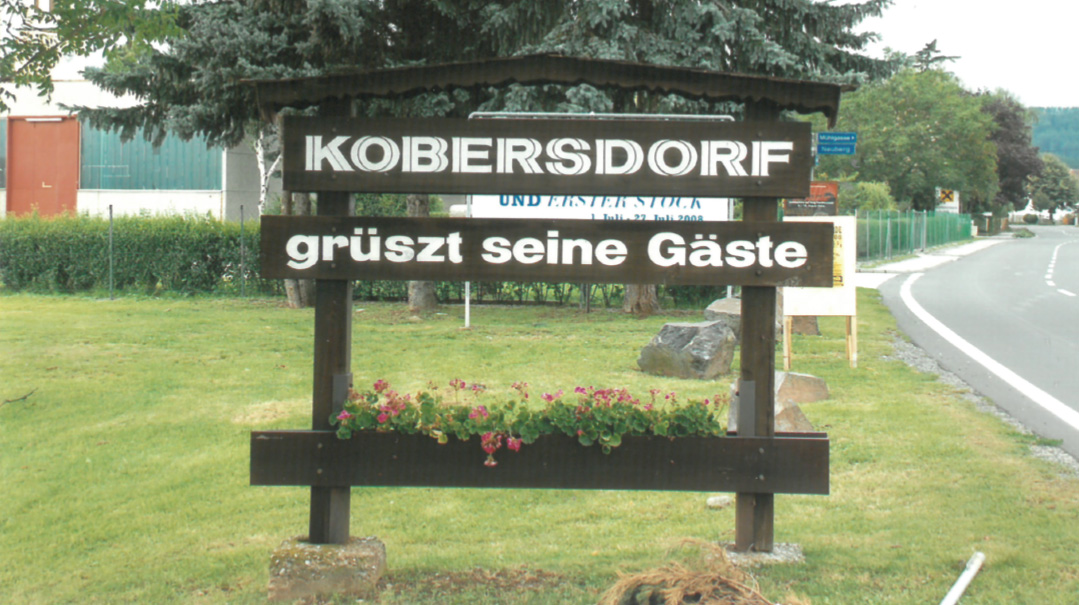
Photos: Burgenland Memschala archives
November 9, 1938
Kristallnacht. The Night of the Broken Glass. Nearly 300 shuls attacked, many burned down to the ground. Hundreds of Jews beaten, arrested, murdered.
On that night of destruction, a shul in Kobersdorf, a small market town in Austria, was also attacked. Its stained glass windows were shattered, its interior destroyed. Only the walls survived.
Glass is the most fragile of materials. It can be easily broken, smashed into tiny fragments. But at the same time, it is the most enduring of materials: It can never be fully destroyed.
And like glass shards ground into the dirt but never completely obliterated, the small shul in Kobersdorf, which survived that most terrifying of nights, has, after more than 80 years lying desolate and desecrated, come back to life.
One day this summer, a group of Austrians, Jews and non-Jews alike, came together in the beautifully rebuilt and renewed Kobersdorf shul to celebrate – and to remember.
For the story the shul tells spans hundreds of years, in a cycle of exile and salvation, banishment and return. Under the newly-painted walls lie layer upon layer of history, of building, devastation, and rebuilding. This is the story of the construction, destruction, and reconstruction of the Kobersdorf shul — and of those who, dedicated to the memories of a lost world, made it possible.
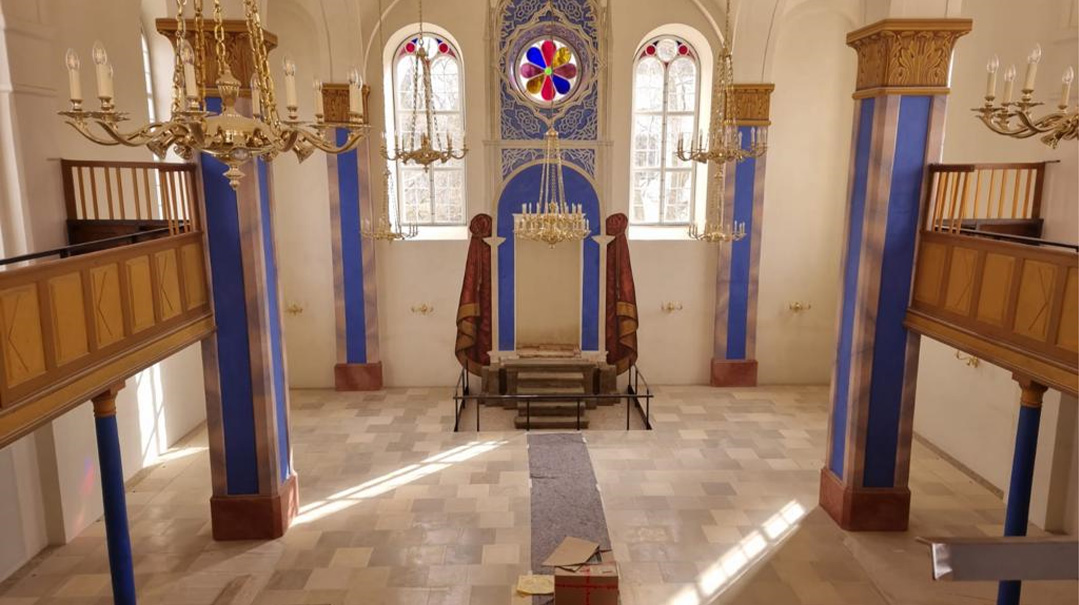
As the Pendulum Swings
Historians suggest that Austrian Jewry goes all the way back to the period after the destruction of the Second Beis Hamikdash. (Archaeologists discovered an amulet with the Shema on it from the third century CE.)
The edelweiss, a white mountain plant, is the national flower and symbol of Austria. If Austria’s Jews were to pick their own symbol, perhaps it would be a pendulum. Over the centuries, Austrian Jewry was characterized by the back-and-forth movement from relative prosperity and peace to anti-Jewish laws, expulsions, imprisonment, public burnings — and then, with the swing of the pendulum, a return to relative peace.
As the story of the Kobersdorf shul begins, the pendulum had swung toward exile. Emperor Leopold I, a fanatical Catholic, enacted laws against the Jews, including one forbidding any but the oldest child in a family from marrying in order to control a growing Jewish population. Finally, in 1670, he expelled the Jews from Vienna.
To “celebrate” this expulsion, local residents renamed the neighborhood that had housed most of Viennese Jewry “Leopoldstadt,” still a well-populated district of Vienna today. (In another swing of the pendulum, in the late nineteenth and early 20th century, the neighborhood named for the man who had expelled the Jews would once again become a center for the Austrian Jewish population, so much so that it earned the nickname Mazzesinsel, the “Island of Matzah.”)
Leopold, rabidly anti-Jewish ruler that he was, still depended on Jewish financiers and advisors. One of those advisors was Rabbi Shimshon Wertheimer, a brilliant scholar and posek who used his influence in the court to convince Graf (Count) Paul Esterhazy to let the exiled Viennese Jews settle in his lands, located right outside Vienna. Some 3,000 Jews came under Esterhazy’s protection – and with another swing of the pendulum, seven Jewish communities were established: Eisenstadt, Mattersdorf (now called Mattersburg), Lackenbach, Frauenkirchen, Kittsee, Deutschkreutz (better known as Tzeilem), and Kobersdorf – the “Sheva Kehillos Kedoshos — the Seven Holy Communities.
IN 1860, nearly two hundred years after the establishment of the Sheva Kehillos, Rav Avraham Shag Zwebner, the rav of Kobersdorf, built a magnificent shul for his kehillah. A prodigy who knew much of Shas by the time he was ten years old, Rav Shag Zwebner received his semichah from the Chasam Sofer in Pressburg. He was known always to stand when he gave shiurim — shiurim that could last six hours.
Zwebner family lore gives two explanations for the name “Shag”: one is for the River Shag near his birthplace, and another possibility is from the pasuk written on his ksav semichah, a reference to a “roaring lion [sha’ag means roar] who is never afraid.” Perhaps the name is a combination of the two — the quote might have been a play on his birthplace. Whatever the reason, Rav Shag Zwebner indeed showed himself as an unafraid leader of his community. At a time when Reform Judaism was making radical changes to religious worship, the shul that Rav Shag Zwebner built adhered unequivocally to halachah. Rav Shag Zwebner was himself involved in every detail of the building, and he even wrote responsa about such matters as the placement of the bimah.
Thirteen years after building a magnificent shul for his kehillah, Rav Shag Zwebner again proved his courage, fulfilling a life-long dream by moving to Eretz Yisrael with his children and his talmid, Rav Yosef Chaim Sonnenfeld, who became the rav of the Old Yishuv. (The two are buried next to each other on Har Hazeisim.) Both established well-known families with hundreds of descendants.
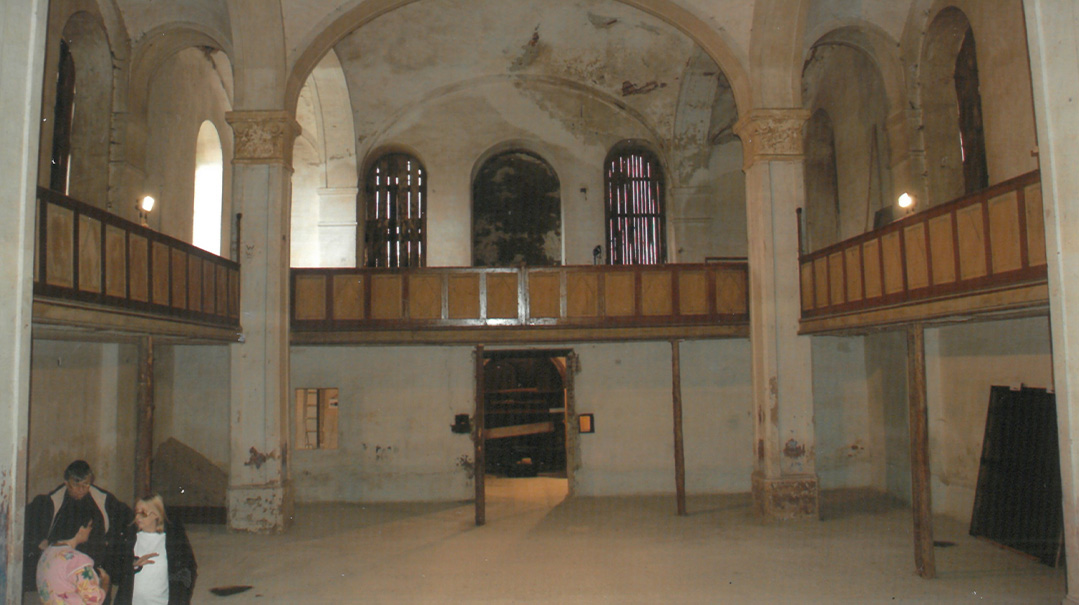
A centuries-long cycle of exile and salvation, banishment and return. The interior of the shul was destroyed, but the structure remained intact. In what merit?
No Jews Left
The Sheva Kehillos were located in the Austrian state of Burgenland, which fell under Nazi influence even before the Anschluss, the official annexation of Austria by Nazi Germany on March 13, 1938. The Jews of Burgenland were among the first in Europe to be exiled. Violent riots broke out all over the area, Jewish businesses were looted, Jews were arrested and tortured, and soon official decrees of expulsion were coming from newly-appointed Nazi officials. By October 1938, Germany and Nazi Austria rejoiced in the news that no Jews were left in Burgenland. The pendulum had brutally swung again, this time toward the destruction of the centuries-old Jewish kehillos.
The Jews of Burgenland were no more—and a month later, on Kristallnacht, the shuls that had served the Jews of the Sheva Kehillos for centuries were destroyed.
Except for the shul in Kobersdorf. Miraculously, though the interior was demolished, the walls of Rav Shag Zwebner’s shul survived.
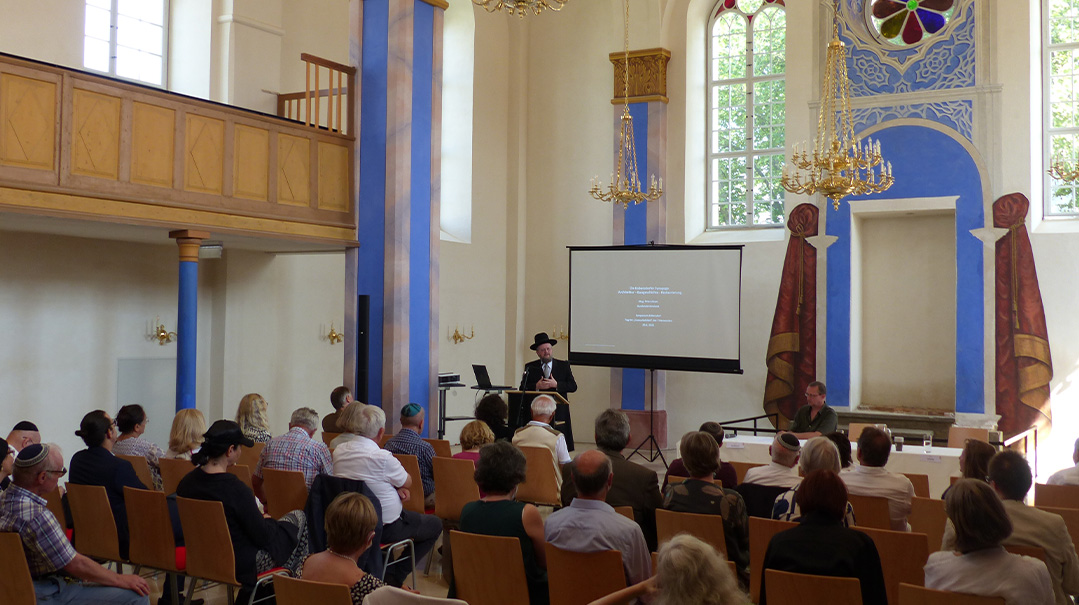
Rabbi Joseph Pardess, Av Beis Din of Misrachi in Vienna. The aron kodesh and sifrei Torah were never found, but the search is on for the buried scrolls
IF you’ve ever spoken to concentration camp survivors, you might have heard them say that at the time that they were chosen to live, they were sorry that they had survived. Their loved ones were gone; they had been stripped of their identities. They were being tortured and humiliated and faced death every day. Wouldn’t a quick death have been a better, or at least an easier fate?
If a shul could speak, after the savagery of Kristallnacht, perhaps the Kobersdorf shul would have said the same. For though the building walls remained, possibly protected from being burned down because of a nearby castle that the mobs didn’t want damaged, the beautiful interior was completely destroyed. The aron kodesh, which had housed 13 sifrei Torah, was gone. (The sifrei Torah themselves had been buried when the Jews had been forced to leave.) The bimah, the furniture, the stained-glass windows, and worst of all, the Jews who had prayed there for so many years — all were gone.
During the war, this place of Jewish worship had been turned into a gym for the SA Nazi officers — the German stormtroopers, famous for their brutality even by Nazi standards.
Was it in the zechus of some special prayers that kept the building intact? As every survivor will tell you — there’s no clear answer as to why some survived and some didn’t. While we’ll never know, like a survivor after the war who begins to come back to life, when the war was finally over, the shul too began its slow recovery.
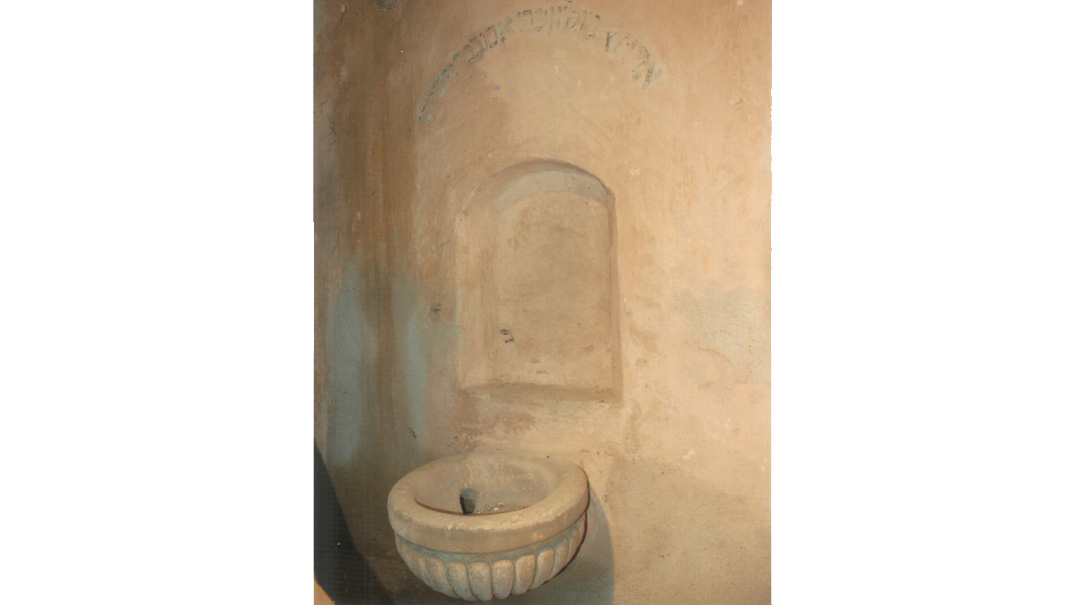
For some inexplicable reason, the washing station remained whole, together with the pasuk etched atop it. Six generations later, a descendant of Rav Zwebner, living in Israel, was standing in the shul his ancestor built
Still Standing
Amichai Braverman, who lives in the Israeli town of Shiloh, is one of the many descendants of Rav Shag Zwebner. His mother is a Zwebner, making him the sixth generation from Rav Avraham. Some 13 years ago, he and his wife, who was born in Vienna, decided to travel and see if anything was left of the shul his ancestor had built in Kobersdorf.
They found that something was, indeed, left — but, to continue the metaphor, it was like meeting a survivor living with scars, still suffering physically and spiritually, bent over in pain. The walls were there, but inside and outside the paint was moldy and peeling. The stained-glass windows had been shattered and were boarded up. The still graceful, commanding columns held up a damaged roof. The stairs to the women’s balcony remained, though too precarious to climb. The shul still stood, however damaged and desolate.
And yet… a patch of the original sky-blue paint was visible through the peeling, water-damaged walls, and the washing station had been left intact. Braverman could make out the pasuk from Tehillim 26 etched in the wall over it: “I wash my hands in purity and circle around Your altar, Hashem….”
A non-Jewish Austrian couple had bought the site and were slowly trying to rehabilitate it, beginning by replacing some of the windows. They wouldn’t be able to finish the job, but the Bravermans were touched by the knowledge that some Austrians, at least, were trying in some small way to atone for the horrific sins of their fathers.
“When I stood where the aron kodesh had been, I cried,” Braverman said. “I tried to imagine Rav Shag Zwebner, my ancestor, standing and speaking before the kehillah. Yet as sad as it was, there was also great joy. I thought how much it would mean to my great-great-great-grandfather, Rabbi Avraham, if he knew that six generations later a descendant of his, living in Eretz Yisrael, was standing in the shul that he had built.”
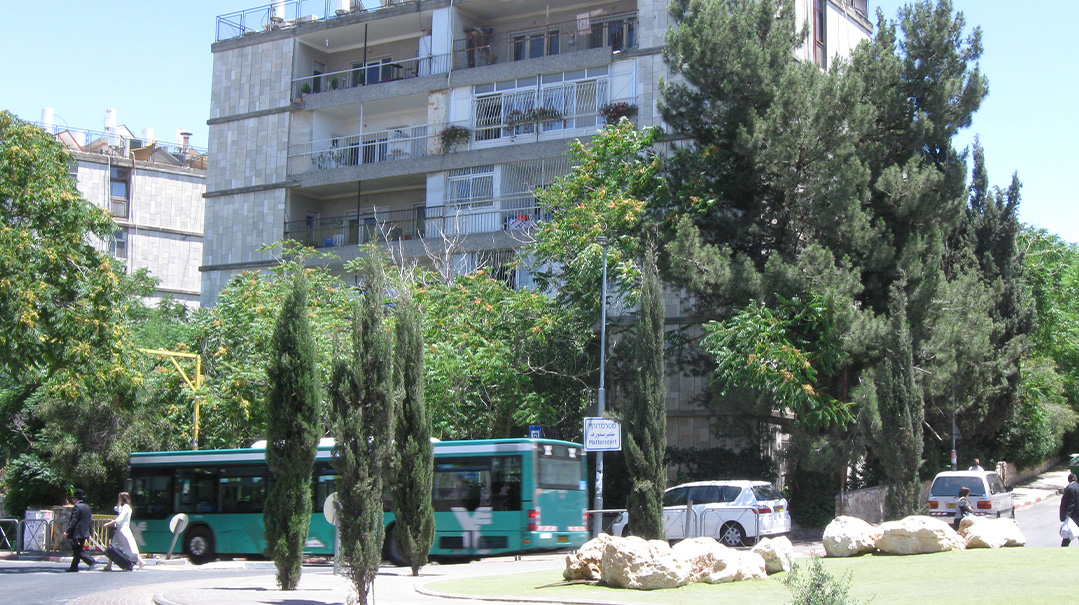
In a Name
Even if you’ve never been to Austria or never heard of the Sheva Kehillos, if you’ve walked through the Jerusalem neighborhood of Mattersdorf, you’ve been to a place whose original name was “Sheva Kehillos.” When the neighborhood – then on Jerusalem’s northern border — was first established in the 1960s, Austria paid for some of the area’s institutions, including the Neveh Simchah retirement home and a kindergarten, and when the Austrian president visited Israel in 1994, he toured the neighborhood named for the town destroyed by his countrymen half a century before.
A
lot can happen in 13 years. The building was sold a number of times to individuals and institutions, but none could finance the huge cost of reconstructing the shattered shul. Finally, in 2019, Austria’s State of Burgenland acquired the building and began extensive renovations and reconstruction, at the cost of approximately 3.5 million Euro. Hans Peter Doskozil, governor of Burgenland, called the project “a visible signal of reparation and a responsible culture of remembrance… the Kobersdorf synagogue is a visible sign that we are committed to our Jewish roots.”
The huge rehabilitation project was headed by Peter Adam of Austria’s Federal Monuments Office. Architects worked with professional restoration crews to make the building identical as possible to the original, based on old photos and documents. Twelve stained glass windows, originally created to parallel the 12 Shevatim, were painstakingly restored; walls were scraped and repainted. Doors were replaced, and the stairway and women’s gallery repaired. A small building was erected next door with 21st century amenities.
The original shul was dedicated on April 11, 1860. One hundred sixty-two years later, at the end of April 2022, the building was officially reopened.
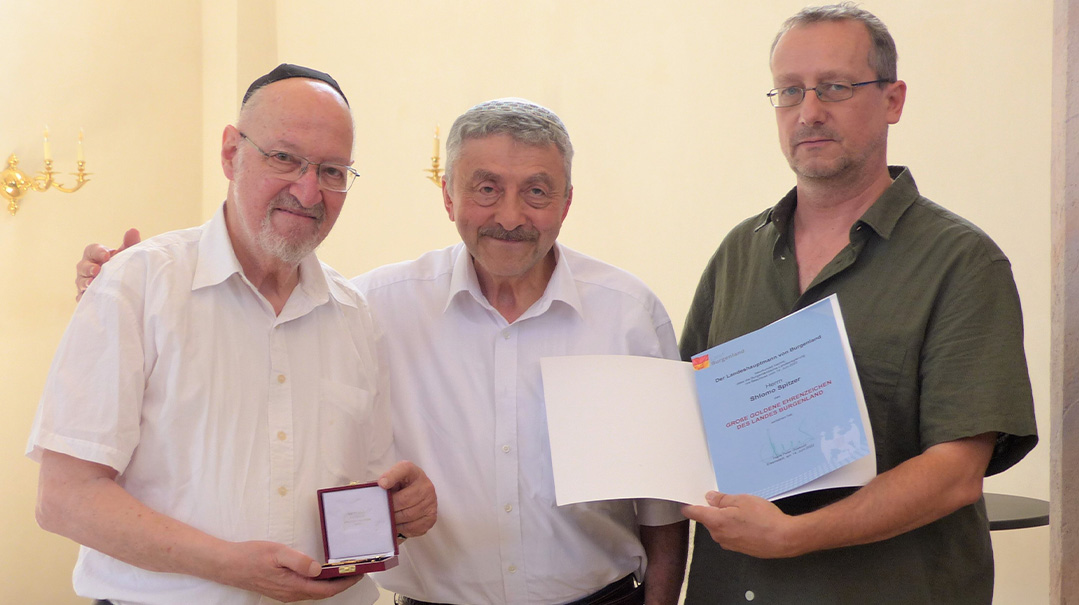
(L-R) Professor Shlomo Spitzer and Nechemja Gang, two men who’ve devoted their lives to preserving the memory of Austria’s Jewish past, together with Dieter Szorger
Honor to a Mass Grave
That’s the story of the building’s physical reconstruction. But if human beings can be said to reconstruct a building’s soul, among those who rebuilt the Kobersdorf shul’s neshamah would be Professor Shlomo Spitzer and Nechemja Gang, two men who have devoted their lives to keeping alive the memory of Austria’s Jewish past.
Shlomo Spitzer was born in Budapest. His mother was killed in an air raid in the ghetto during the war, while his father survived a notorious labor camp. The family moved to Vienna, and later made aliyah, where Spitzer became an internationally known professor of Jewish history at Bar Ilan University.
Spitzer, now retired, is an academic expert in minhagei Ashkenaz and a pioneer researcher of European Jewish history. He has written several books about the destroyed communities of Europe, including the Sheva Kehillos. At the event in the renewed Kobersdorf shul this past June, he was honored with Austria’s “Great Golden Medal of Honor” for his research into the history of the Jews of Burgenland.
Eight years before, Spitzer partnered with Nechemja Gang, head of Misrachi Austria, in another extraordinary project of remembrance:
In October 1944, 30,000 Hungarian Jews, men and women and children, were arrested in Budapest and sent by Adolf Eichmann ym”sh to forced slave labor along the so called “Süd-Ost Wall” (“Southeast Wall”), digging a series of defensive, anti-tank ditches designed to stop the Russian Army’s advance. About 1,100 were sent to dig trenches in the area of Deutschreutz (Zeilem), one of the Sheva Kehillos. (A side note: The young man who would become Pope Benedict also dug for a few weeks in the same area—as a member of Nazi Youth.) Within a few weeks, 284 of these Jewish laborers had died from the murderous conditions.
The death of these Jews would have been just a tiny footnote in a Nazi report, except for the heroism of two doctors — Lajos Kohout, Kobersdorf’s community doctor, and Endre Ban, a Jewish doctor who worked with him. Both men defied Nazi orders and kept records of most of the names of those who died. Kohout also arranged for the murdered men to be buried in a mass grave at the ancient Jewish cemetery in Zeilim.
After researching the topic extensively, Nechemja Gang and Shlomo Spitzer worked for two years together with Peter Adam to place a monument at the mass grave, inscribed with the names of the murdered Jews on the list. As Gang put it, “this gave them back a bit of their dignity, gave a yad v’shem to those who were killed.”
The plaque was dedicated in October 2014, exactly seventy years after the Hungarian Jews were sent there to die. The ceremony marking the occasion was held in the Austrian castle of Zeilem, the very place where Jewish slave laborers during the war had been housed — like animals, in the stables.
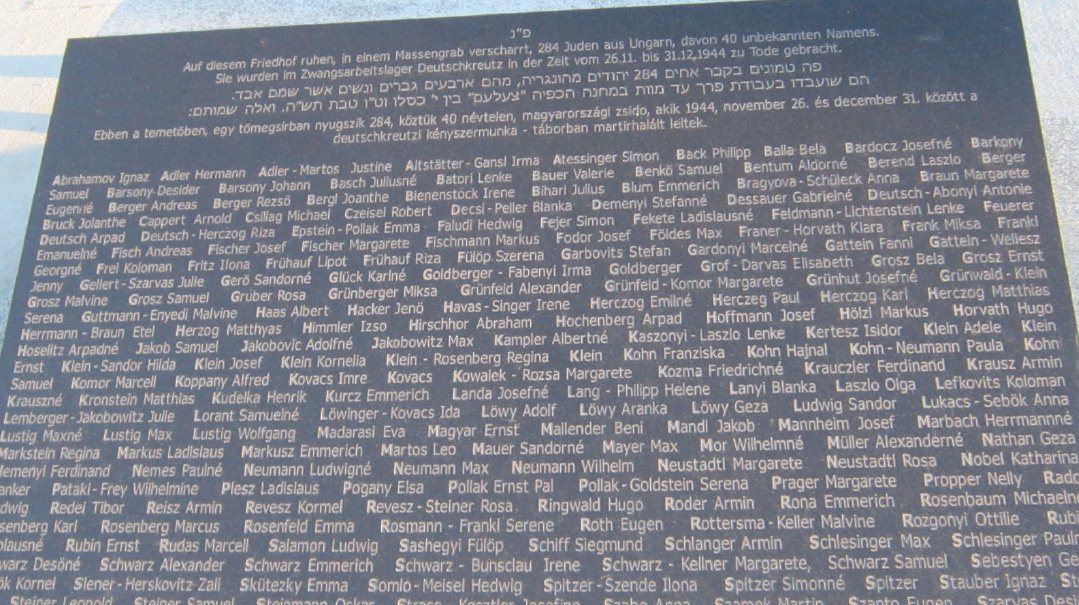
Amazingly, when the workmen cleaned the mold and layers of old paint off the walls, bits of the original inscriptions could still be seen. Those entering the building in 1860 were greeted by the words “Baruch Habaah B’Shem Hashem,” words of welcome that remained, revealed now from under the peeling paint.
In the nineteenth century, the Jews of Kobersdorf collected money for their brothers struggling in Eretz Yisrael. During the reconstruction, those cleaning the walls were amazed to find the place where the pushke would have been kept, under faded letters saying “Nidvas Eretz Yisrael [donations to Eretz Yisrael].” They also found another tzedakah-related inscription, a pasuk from Mishlei, “Matan b’seser yichafeh af— an anonymous contribution turns away anger.” Perhaps these walls remained standing in the zechus of the kehillah’s tzedakah?
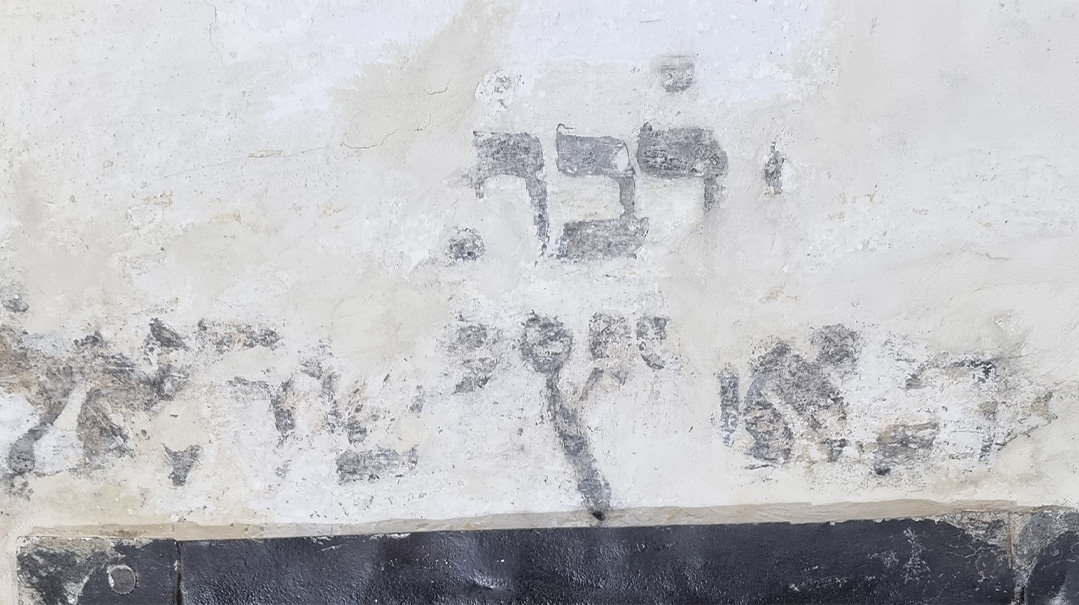
During reconstruction, workers were amazed to find the place where the tzedakah box was kept, under the letters “Nidvas Eretz Yisrael”
Empty Spaces
After his success in commemorating the memory of those killed in the area, Gang, working with Rav Yosef Menashe Pardess, Av Beit Din for financial and family matters in Vienna, turned his attention to the Kobersdorf shul project. They worked tirelessly with Peter Adam and Austrian authorities in every detail of the reconstruction, bringing a crucial understanding of the spiritual nature of the project as well.
I spoke often, through Zoom and phone calls, with Nechemja Gang in Vienna. Gang was born after the war. A courtly, Yekkishe man and an incredible scholar fluent in half-a-dozen languages, his passion for remembering the past through rebuilding in the present came through clearly in every interview.
He explained, for example, that although the shul was rebuilt with incredible detail, there is one gaping “hole” in the reconstruction: The panels on either side of the area where the aron kodesh should stand are painted a deep, sky blue, but where the aron itself should be, there is nothing. That, he said, is because the shul is to be used for Jewish educational and cultural events, and a heichal with an aron kodesh may only be used for tefillah and learning.
But there’s something else: He sees the entire reconstruction project as an os zikaron, a sign of remembrance, of the beauty that was, and the tragedy that destroyed it. The empty area where the aron should stand is zecher l’Churban.
The empty space in the shul that was the place of the aron kodesh once housed 13 sifrei Torah. When the Jews were fleeing for their lives before the Nazi takeover, leaving everything behind, some took the time to hide what was most precious to them—the 13 sifrei Torah housed in the aron kodesh of the Kobersdorf shul. Rather than let them be desecrated, they buried them…. But no one knows exactly where.
For Nechemja Gang, finding those sifrei Torah is his next project. He’s already begun working with the Austrian authorities to organize a “search-and-rescue” mission, using the latest underground radar search technology to find the place where the scrolls were buried.
Gang is already talking about the next event he hopes to hold in the shul by next summer: Maybe, just maybe, it will be a celebration of the 13 sifrei Torah.
“Who knows?” said Gang. “Perhaps they were hermetically sealed, and they can still be used. We’ve already seen that miracles happen.”
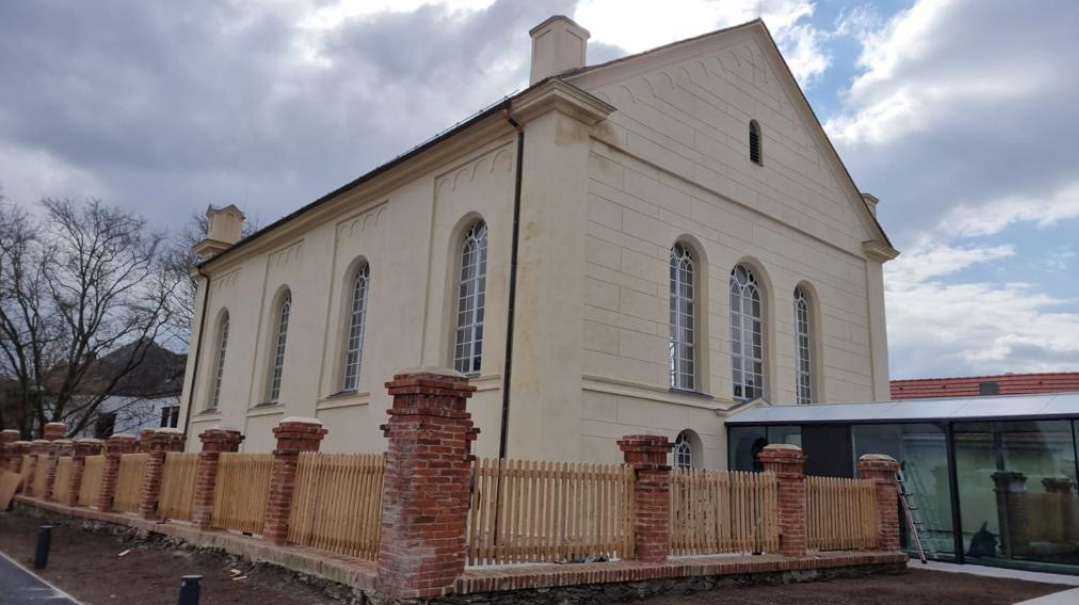
Remembering the past by rebuilding the present
Family Ties
When I discovered Rav Shag Zwebner’s connection to the shul in Kobersdorf, I headed straight to my neighbors in Beit Shemesh, Hadas Friedman and Deborah Zwebner. Both have an identical, detailed family tree hanging proudly in their homes — a family tree that begins with Rabbi Shag Zwebner.
The Zwebner and Friedman families, some of the many descendants of the rav who built the Kobersdorf shul, were instrumental in building my own shul, Bet Knesset Etz Chaim, in Bet Shemesh. The Zwebners have since moved to Ashkelon where they’re working on building a new shul. The apple, as the saying goes, doesn’t fall far from the (family) tree.
(Originally featured in Mishpacha, Issue 928)
Oops! We could not locate your form.







